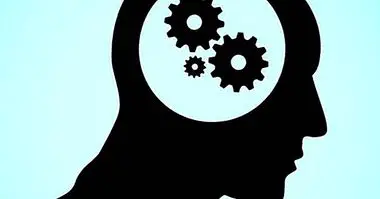The Behavior Inhibition Disorder of Russell A. Barkley, alternative to ADHD
Attention deficit hyperactivity disorder is a condition involved in discussions and controversies, in which the scientific community itself differs in both symptoms and treatment, and even in some sectors it comes to question the existence of this.
The psychologist Russell A. Barkley, created an alternative explanation model called behavioral inhibition disorder , which puts in check the role of attention in ADHD and which will be discussed throughout this article.
- You may be interested: "Attention deficit or selective attention in ADHD"
What is disorder of behavioral inhibition?
The behavioral inhibition disorder is an explanatory model created by the American psychologist Russell A. Barkley, his intention was that this was constituted as an alternative to the label of attention deficit hyperactivity disorder (ADHD).
This alternative explanatory model of ADHD revolves around the executive function known as response inhibition . According to Barkley, the main advantage of the behavioral inhibition disorder is that it fits better with the symptoms associated with the subcategories of ADHD: hyperactive and combined.
To better understand this model, the term executive function is described below.
- Related article: "Attention Deficit Hyperactivity Disorder (ADHD), also in adults"
Executive functions
The executive functions correspond to terms used in neuropsychology. This expression refers to all the cognitive abilities that a person resorts to when their efforts are directed towards the achievement of an achievement or an objective.
These executive functions are essential to manage cognitive, emotional and behavioral processes that enable the person to respond to any situation. In the same way, these are vital for the realization of most tasks and functions that a person must perform throughout the day; especially those actions that involve the generation of plans, decision making, problem solving, self-control and emotional regulation.
The processes referred to by the term "executive function" can be subdivided into two groups: basic functions and functions derived from them. These functions are:
- Basic functions: inhibition of response, cognitive flexibility and working memory.
- Derivative functions: Planification and organization.
The role of behavior inhibition
Of all the executive functions that the human being serves, Barkley focuses on the inhibition of behavior , giving it a crucial role when it comes to creating its own explanatory model of ADHD.
By inhibition of behavior means the suspension of a response or a series of behaviors that the person has internalized or learned before and that are usually automatic. The purpose of this inhibition or containment is to solve any type of problem or task.
The operation of the inhibition of the response consists, in the appearance of according to what stimulus, to suspend certain behavior or action and replace it with another succession of acts or responses . Another option is to delay this sequence of actions over time until the person perceives that it is the right time to carry them out.
The explanatory model of Barkley
In his work "ADHD and the nature of self-control", published in 1997, Barkley is dedicated to structuring all the information about ADHD collected during more than 25 years of study and constitutes the explanatory bases of the behavior inhibition disorder .
Barkley starts from the basis that the symptoms associated with ADHD can be divided into three groups or genders. These categories are: hyperactivity, impulsivity and attention deficit. However, Barkley only considers hyperactivity and impulsivity. Barkley argues that considering attention as a primary symptom of this disorder can lead to error when it comes to treating it.
Also, within the executive functions named above, Barkley highlights the work of inhibiting response . In addition it investigates how this can exert a series of harmful effects on the other functions, which are subordinated to it to be able to function correctly,
The following shows the relationship that the inhibition of behavior has with the rest of executive functions and the symptoms that it provokes as a result of this interference:
1. Alterations in the non-verbal work memory
Inhibiting behavior causes problems in the representation and transformation of information, as well as deficiencies in the ability to anticipate future actions and difficulties in time management.
2. Problems in verbal work memory
In this case, both the verbal work memory and the internalization of speech are seriously affected. The main associated symptoms include obstruction of reflection capacity, problems to comply with norms and to integrate regularized behavior patterns, decreased ability to solve problems , deficiencies in reading comprehension and deficits in moral reasoning.
3. Deficits in emotional and motivational self-regulation
Problems in the ability to express feelings and emotions, which become exaggeratedly disproportionate; the deficiencies to perceive the point of view of the other and the alterations in the regulation of motivation are typical symptoms that cause behavioral inhibition in people with ADHD.
4. Lack of reconstitution
Finally, the person can also find obstacles when carrying out procedures of analysis and synthesis of the behavior; as well as deficits in the ability to imitate, copy or reproduce behaviors and a smaller variety of strategies of action at the time of solving problems or reaching an objective.
The function of attention
As mentioned above, Barkley eliminates the effect of attention as a factor or principal agent of the Behavior Inhibition Disorder model.
Even so recognizes the existence of two types of care . That attention is controlled externally by immediate reinforcements and the attention that originates and controls the person from within, which needs the inhibition of behaviors that are underway and is more effective for the achievement of long-term objectives.
In this way, Barkley accepts that attention is also included in his model but that it is subordinated to other factors and that all people diagnosed with ADHD present difficulties in the attention originated from the inside.



















